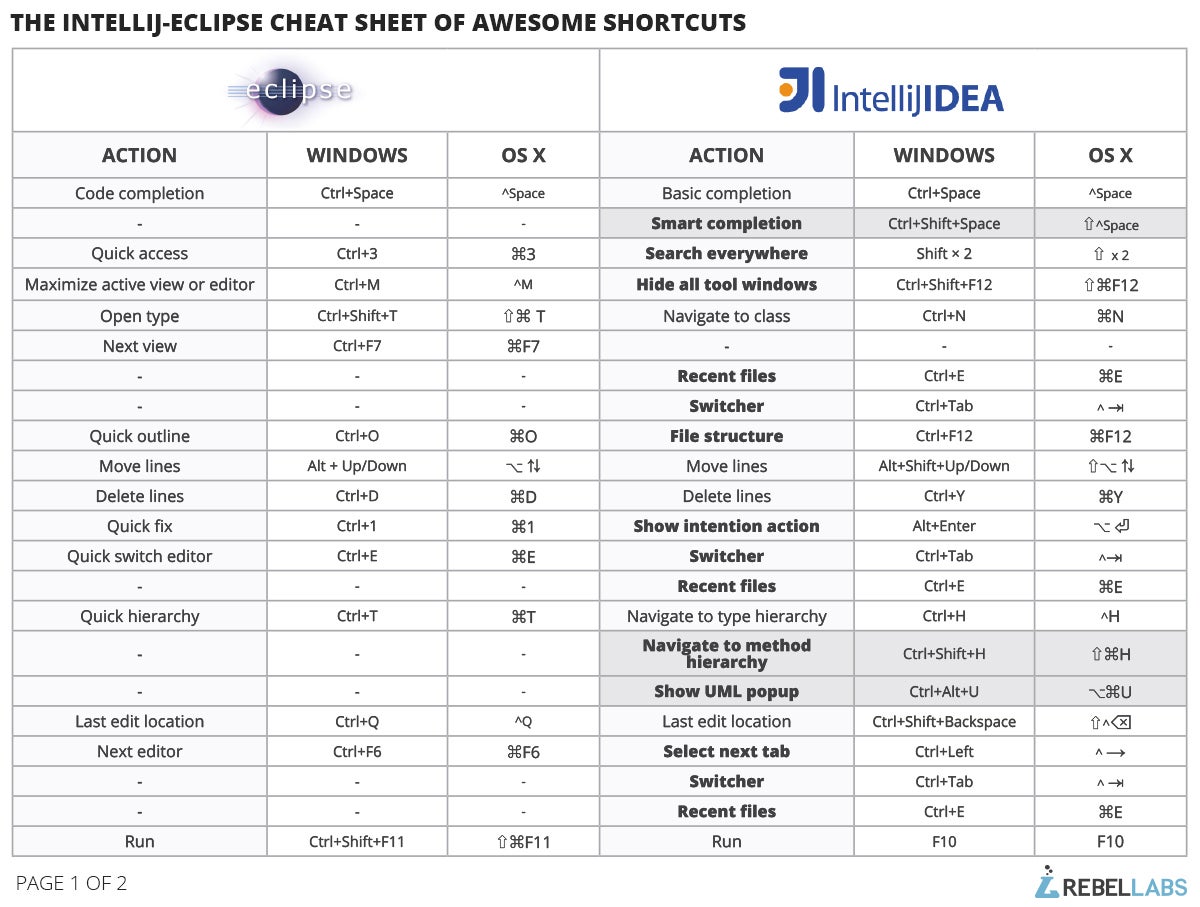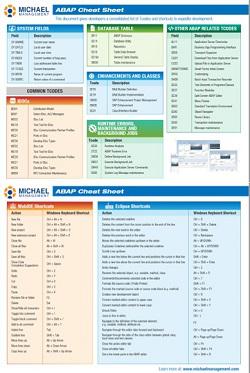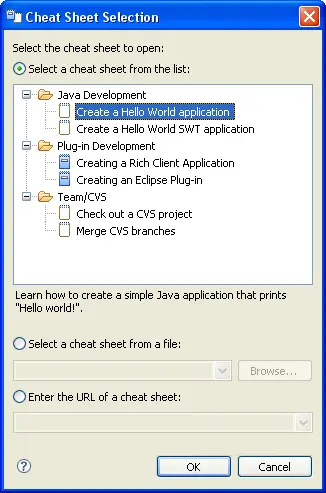(click for PDF)
UPDATE: These cheat sheets have been revised and improved. I recommend checking out Version 2.
As I’ve mentioned in the past, I frequently prep system cheat sheets for the RPGs I run. These summarize all the rules for the game — from basic action resolution to advanced combat options. It’s a great way to get a grip on a new system and, of course, it also provides a valuable resource at the game table for both the GM and the players. (For more information on the methods I use for prepping these sheets, click here.)
This particular set of cheat sheets was designed for Eclipse Phase. It should be noted that these cheat sheets aren’t designed to serve as a quick start packet: They’re designed to be a comprehensive reference for someone who has read the rulebook and will almost certainly prove wholly insufficient for teaching you the game. (Although they do serve as a valuable adjunct reference if you’re teaching someone the game.)
The contents of these cheat sheets is gathered as follows: Download and run a pristine Eclipse SDK in a new workspace Open the preferences dialog and go to the page General Keys Save the keyboard shortcuts by hitting the Export CVS. Eclipse CDT 8.0 Cheat Sheet Window Shortcut Description Alt+- Show System Menu Alt+Shift+F3 Show Contributing Plug-in Ctrl+3 Quick Access Ctrl+E Quick Switch Editor Ctrl+F10 Show View Menu Ctrl+F6 Next Editor Ctrl+F7 Next View Ctrl+F8 Next Perspective Ctrl+M Maximize Active View Ctrl+Shift+E Switch to Editor Ctrl+Shift+F6 Previous Editor. Eclipse Mac cheat sheet of all shortcuts and commands. I do Eclipse RCP plug-ins from time to time. My biggest hurdle is to wrap my head around the extension points (not what they are, but which one to use when). Is there a site where I can find a list. Eclipse Basics: A Cheat Sheet for Eclipses & Eclipsed Personal Planets If you stare at a bright light too long, and close your eyes, you’ll see the light’s afterimage persist, then slowly fade. An eclipse creates a sensitive degree. A North Node eclipse is an open door which draws things to you.
WHAT’S NOT INCLUDED
The most notable absence from these cheat sheets are what I refer to as “character option chunks” (for reasons discussed here). So you won’t find psi sleights or the effects of specific nanodrugs listed here.
HOW I USE THEM
I keep a copy of these cheat sheets behind my GM screen for quick reference and also place a half dozen copies in the center of the table for the players to grab as needed. The information included is meant to be as comprehensive as possible; although rulebooks are also available, my goal is to minimize the amount of time people spend referencing the rulebook: Finding something in the 14 pages of the cheat sheet is a much faster process than paging through a 400 page rulebook. And, once you’ve found it, processing the streamlined information on the cheat sheet will (hopefully) also be quicker.
The organization of information onto each page of the cheat sheet should, hopefully, be fairly intuitive. The actual sequencing of pages (combat before hacking, hacking before psi) is mostly arbitrary. The sheets as they currently exist have been tweaked several times based on actual play experience.
Page 1: Basic mechanics. The stuff on this page should become irrelevant fairly quickly because players are going to rapidly memorize it through play. The information in “Your Muse and You” is more verbose and advisory than the sort of material I would normally include in a system cheat sheet, but after a few sessions I found that new players were routinely under-utilizing their muses. Adding this chunk of material significantly improved this and the inclusion of the stat block for a standard muse was significantly useful.
Pages 2-4: The combat reference. If you’re looking for a more simplistic system introduction for new players, temporarily remove pages 3 and 4. The Eclipse Phase combat system really comes alive when both the GM and the players are actively trying to create situations that will create positive modifiers on their combat tests, so I recommend continually refocusing attention on the combat modifiers table through both word and deed.
Page 5: In a future version of the cheat sheets, I might try to find some way to incorporate more info on medichines, nano-bandages, and repair spray. (They’re fairly ubiquitous and commonly used.) But letting health and healing spill onto multiple pages made things significantly less useful and most of the key information is summarized on the Healing table in any case. So, for now, I’m merely including the page references.
Page 6: The streamlined rules for jamming shells and vehicles is one of the major improvements Eclipse Phase makes on the Shadowrun rules. I just recently added the default stat block for a bot/vehicle AI to this page. Including the muse AI on page 1 was so useful I decided I should try to include a few more of these stat blocks. I’ve never done this with a cheat sheet before, but these AIs are so ubiquitous in the Eclipse Phase setting that I think this will prove very valuable.
Page 7-10: The methodology here is a page of general information on the mesh and then two pages of material on hacking… and then another half page on hacking because I couldn’t figure out a way to squeeze it all onto two pages. Fortunately, the key information is all on the two main pages (although this took a few playtesting tweaks to really figure out what was essential and what wasn’t in typical play).
Page 11: Reputation. This page is oft-referenced by new players trying to figure out how the new economies of Eclipse Phase work.

Page 12: I initially didn’t include resleeving rules in the cheat sheets. Big mistake. First, there are many scenarios in which the PCs are going to seek frequent resleevings in the middle of the action. Second, for new players this sheet helps to acclimate them to some of the unusual features of the setting.
Page 13: This is a recent addition to the cheat sheet because I specifically avoided including psi in the first half dozen sessions of Eclipse Phase that I ran. That’ s not because I don’t like the psi system (or its inclusion in the setting). Rather, I decided there was already so much stuff to grapple with in the setting that simply avoiding psi would be a convenient way to simplify things.

Page 14: And, finally, a page of miscellanea. Which is exactly what it sounds like. Some people might consider leaving this sort out of stuff off the cheat sheet entirely, but over the years I’ve found that this is actually the stuff you’ll find most useful in the long-term. As the other core mechanics slowly ingrain themselves into your memory, it’s going to be the random miscellanea that you’ll need to keep referencing every time it comes up.

A SIMPLER SET

If you’re looking for a quick introduction to the system for new players, here’s what I recommend:
- Page 1: Basic Mechanics (tell them to report test results to as “# out of #”, for example “I rolled 32 out of 65”)
- Page 2: Basic Combat (emphasize how valuable combat modifiers are)
- Page 5: Health and Healing (make sure they understand wound/trauma thresholds; you can’t trust players with their own bookkeeping until they do)
- Page 7: Basic Mesh Use (emphasize how valuable Research tests are)
- Page 11: Reputation / Social Networks
For this approach to work, you’ll want to avoid PCs that are focused on jamming, hacking, or psi. That’ll be very limiting in a long-term campaign, unfortunately, so you might want to start with a couple of one-shots to build up system familiarity. Or, alternatively, set aside time with the specific players interested in those areas to review those rules.
2e Eclipse Phase Cheat Sheet
There is also, of course, setting information that you’ll want to pass on. I recommend 10 Things You Should Know About Eclipse Phase as a good way for accomplishing that.
Dvt Eclipse Cheat Sheet
The Eclipse Phase: System Cheat Sheet is licensed under the Creative Commons Attribution-Noncommercial-ShareAlike 3.0 Unported License.
